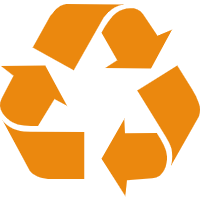Introduction
The second-hand clothing industry has witnessed significant evolution in packaging methods over the years. From traditional bulk bales to modern, eco-friendly solutions, the packaging landscape has transformed to meet the demands of consumers and address environmental concerns. This article explores the journey of packaging methods in the second-hand clothing industry, highlighting key milestones and emerging trends.

Origins of Bulk Bales About Used Clothes
The use of bulk bales for packaging second-hand clothing dates back to the early days of the industry. Garments were compressed and bundled into large bales for ease of transportation and storage. While effective, this method lacked sophistication and environmental considerations.

Transition to Sustainable Packaging
As environmental awareness grew, the industry began shifting towards more sustainable packaging solutions. Biodegradable materials such as cardboard boxes and recycled paper became popular alternatives to traditional bales. This transition marked a significant step towards reducing the carbon footprint of the second-hand clothing trade.

Customized Packaging for Export
With the expansion of the global market for second-hand clothing, the need for specialized packaging for export became apparent. Companies started offering customized packaging services tailored to meet the requirements of international shipping, ensuring garments reached their destinations safely and intact.

Packaging methods of Second-hand Clothing Bales
Technological Innovations in Packaging: Advancements in technology have revolutionized packaging methods in the second-hand clothing industry. Automated sorting and packaging systems have streamlined the process, improving efficiency and reducing labor costs. Additionally, smart packaging solutions have been developed to optimize space utilization and minimize waste.

The Principles of Second-hand Clothing Industry
Many companies in the second-hand clothing industry have embraced the principles of the circular economy in their packaging practices. This includes using recyclable materials, designing packaging for reusability, and implementing closed-loop packaging systems. By adopting circular economy principles, companies are reducing waste and promoting sustainability throughout the supply chain.

Consumer Education and Engagement
Increasingly, companies are focusing on consumer education and engagement to promote sustainable packaging practices. Through marketing campaigns, product labeling, and educational initiatives, consumers are being informed about the environmental impact of packaging and encouraged to make eco-conscious choices.

Conclusion
The evolution of packaging methods in the second-hand clothing industry reflects a broader shift towards sustainability and environmental responsibility. From traditional used clothing by the bale to innovative, eco-friendly solutions, packaging practices have evolved to meet the demands of a changing market and address growing environmental concerns. As the industry continues to evolve, collaboration between stakeholders and a commitment to sustainability will be key to shaping the future of packaging in the second-hand clothing trade.

we roots into domestic and international markets and enjoys great reputation for providing customers with quality products and stable supply.
Now we are searching a capable partner in your country to grow up together with nice wealfare, are you interested?
If you have any needs,
Inquiry Now
Get in Touch Now

Excellent Quality Control

High Quality Raw Materials

Professional Services

Excellent After-sales Service
